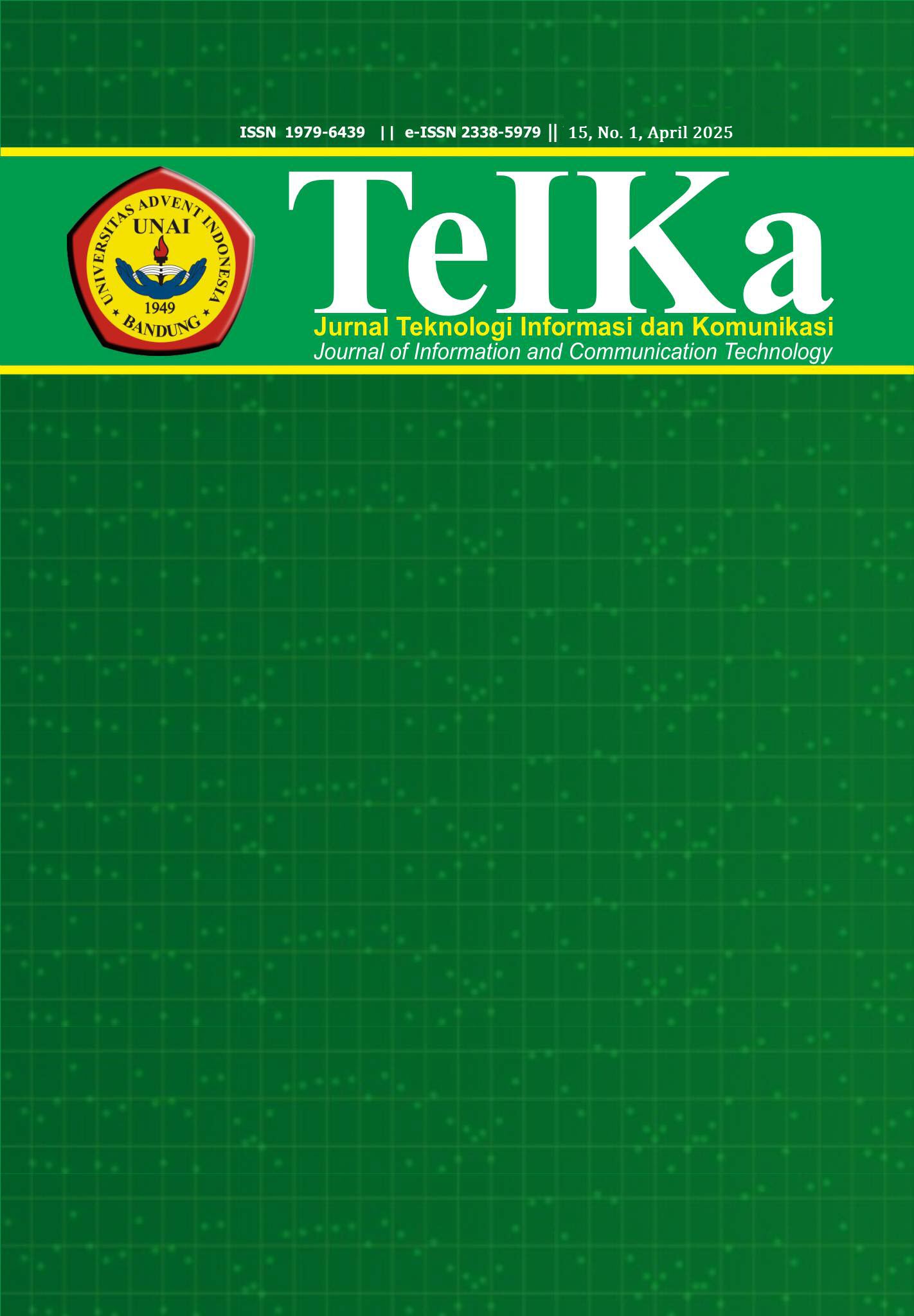indonesia SYSTEMATIC LITERATURE REVIEW TENTANG PENERAPAN TEKNOLOGI BLOCKCHAIN PADA BIDANG KEUANGAN
Keywords:
Tinjauan Literatur Sistematis, Blockchain, Teknologi Finansial, Sistem Keuangan TradisionalAbstract
Distributed ledger technology, better known as blockchain, has emerged as a promising breakthrough in supporting financial inclusion, especially for populations that are not covered by conventional financial frameworks. This paper aims to investigate the contribution of blockchain in boosting financial inclusion compared to the established financial system through a systematic literature review approach. This paper summarizes literature from leading academic databases to identify key findings on the benefits, constraints, and prospects of blockchain development in the financial sector. The analysis shows that blockchain can expand the accessibility of financial services, reduce transaction costs, and provide greater transparency and protection. However, several challenges arise such as the lack of regulatory framework, knowledge disparity, and issues of scalability and interoperability. The conclusion of this review indicates that blockchain has significant potential to boost financial inclusion, but collaborative efforts from governments, corporations, and technology innovators are needed to overcome these obstacles. This paper provides an in-depth understanding of the opportunities and challenges of blockchain implementation and recommendations for further research.
Downloads
References
M. Niforos, “Blockchain in Financial Services in Emerging Markets, Part I: Current Trends,” Blockchain in Financial Services in Emerging Markets, Part I: Current Trends, no. August, 2017, doi: 10.1596/30369.
D. Nassiry, “The Role of Fintech in Unlocking Green Finance: Policy Insights for Developing Countries,” Handbook of Green Finance, no. 883, pp. 315–336, 2019.
M. Kouhizadeh, S. Saberi, and J. Sarkis, “Blockchain technology and the sustainable supply chain: Theoretically exploring adoption barriers,” Int J Prod Econ, vol. 231, p. 107831, Jan. 2021, doi: 10.1016/J.IJPE.2020.107831.
K. Staffs, “Guidelines for performing systematic literature reviews in software engineering,” Technical report, Ver. 2.3 EBSE Technical Report. EBSE, no. January 2007, pp. 1–57, 2007.
V. Braun and V. Clarke, “Reflecting on reflexive thematic analysis,” Qual Res Sport Exerc Health, vol. 11, no. 4, pp. 589–597, Aug. 2019, doi: 10.1080/2159676X.2019.1628806.
H. Alanzi and M. Alkhatib, “Towards Improving Privacy and Security of Identity Management Systems Using Blockchain Technology: A Systematic Review,” Applied Sciences (Switzerland), vol. 12, no. 23, 2022, doi: 10.3390/app122312415.
Temitope Oluwafunmike Sanyaolu, Adams Gbolahan Adeleke, Chidimma Francisca Azubuko, and Olajide Soji Osundare, “Harnessing blockchain technology in banking to enhance financial inclusion, security, and transaction efficiency,” International Journal of Scholarly Research in Science and Technology, vol. 5, no. 1, pp. 035–053, 2024, doi: 10.56781/ijsrst.2024.5.1.0032.
D. Mohanty, D. Anand, H. M. Aljahdali, and S. G. Villar, “Blockchain Interoperability: Towards a Sustainable Payment System,” Sustainability (Switzerland), vol. 14, no. 2, 2022, doi: 10.3390/su14020913.
S. Trivedi, K. Mehta, and R. Sharma, “Systematic Literature Review on Application of Blockchain Technology in E-Finance and Financial Services,” Journal of Technology Management and Innovation, vol. 16, no. 3, pp. 89–102, 2021, doi: 10.4067/S0718-27242021000300089.
W. Zheng, Z. Zheng, P. Li, and R. Chen, “NutBaaS : A Blockchain-as-a-Service Platform,” vol. 7, 2019.
M. F. أبو فرحة, “The Blockchain: The Next Technological Revolution In The World of The Economy,” مجلة العلوم الإقتصادية و الإدارية و القانونية, vol. 6, no. 15, pp. 119–140, 2022, doi: 10.26389/ajsrp.f260122.
Gioia Arnone, “Blockchain and Cryptocurrency Innovation for a Sustainable Financial System,” International Journal of Industrial Management, vol. 15, no. 1, pp. 1–16, 2022, doi: 10.15282/ijim.15.1.2022.8994.
D. Mhlanga, “Block chain technology for digital financial inclusion in the industry 4.0, towards sustainable development?,” Frontiers in Blockchain, vol. 6, no. February, pp. 1–13, 2023, doi: 10.3389/fbloc.2023.1035405.
M. A. Taha, “Block Chain Technology and Financial Inclusion- A Systematic Review of Literature,” International Journal of Advanced Science and Technology, vol. 29, no. 7, pp. 14479–14486, 2020.
D. Kumar, B. V. Phani, N. Chilamkurti, S. Saurabh, and V. Ratten, “Filling the SME credit gap: a systematic review of blockchain-based SME finance literature,” Journal of Trade Science, vol. 11, no. 2/3, pp. 45–72, 2023, doi: 10.1108/jts-06-2023-0003.
M. R. Rabbani, S. Khan, and E. I. Thalassinos, “FinTech, blockchain and Islamic finance: An extensive literature review,” International Journal of Economics and Business Administration, vol. 8, no. 2, pp. 65–86, 2020, doi: 10.35808/ijeba/444.
I. BandasoTrinita, “Blockchain technology : bagaimana menghadapinya? – dalam perspektif akuntansi,” vol. 4, no. 2, pp. 97–115, 2022.
J. Meirte et al., “Benefits and Disadvantages of Electronic Patient-reported Outcome Measures: Systematic Review,” JMIR Perioper Med, vol. 3, no. 1, p. e15588, 2020, doi: 10.2196/15588.
S. Götz, M. Tichy, and R. Groner, “Claimed advantages and disadvantages of (dedicated) model transformation languages: a systematic literature review,” Softw Syst Model, vol. 20, no. 2, pp. 469–503, 2021, doi: 10.1007/s10270-020-00815-4.
Downloads
Published
How to Cite
Issue
Section
License
Copyright (c) 2025 TeIKa

This work is licensed under a Creative Commons Attribution-ShareAlike 4.0 International License.
The submitting author warrants that the submission is original and that she/he is the author of the submission together with the named co-authors; to the extend the submission incorporates text passages, figures, data or other material from the work of others, the submitting author has obtained any necessary permission.
Articles in this journal are published under the Creative Commons Share Alike Attribution Licence (CC-BY-SA What does this mean?). This is to get more legal certainty about what readers can do with published articles, and thus a wider dissemination and archiving, which in turn makes publishing with this journal more valuable for you, the authors.
By submitting an article the author grants to this journal the non-exclusive right to publish it. The author retains the copyright and the publishing rights for his article without any restrictions.









